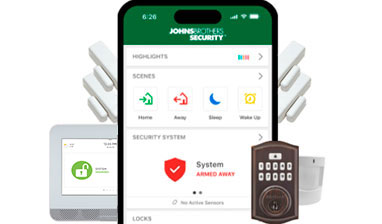
When it comes to child-proofing your home, it’s important to recognize that each room of your home has different safety needs. To keep your family safe, consider using these home safety guidelines.
They’re safe enough to sleep in, but bedrooms have their share of hazards. Furniture that can be climbed on, such as dressers, should be secured so it cannot be tipped over. Cords for blinds and curtains should be tied up out of reach to prevent strangulation.
Young children should always be supervised in the bathroom. To reduce the risk of accidental drowning, never leave a small child unattended in a bathtub, and a toilet-lid lock is recommended. Slip-free stickers should be installed on the tub bottom. Make sure medications, sharp items like razors and scissors, and chemicals are kept out of child’s reach or locked away. Electrical items should always be unplugged immediately after use and put away. Childproof locks should be installed on all cabinets and drawers.
Always be sure to have a working fire extinguisher available for an adult to use in case of a fire. Items that you do not want children to reach, like knives, chemicals, medicine, and suffocation hazards like cling wrap should be kept out of reach or in a locked cabinet. According to the Centers for Disease Control and Prevention, every day over 300 minors are treated in emergency rooms for burns and two die from burns. To prevent your child from pulling items off the stove onto themselves, always point pot and pan handles toward the back of the stove.
If you have small children just learning to walk, padding the sharp corners on tables and other furniture can prevent injury. Safe Kids Worldwide reports that every 3 weeks a child dies from a television tipping over. Over the past 10 years, a child visited the emergency room every 45 minutes because of a TV tipping over. Tall furniture should be bolted to the wall to prevent it from tipping over.
Fire and carbon monoxide alarms should be installed around the entire home. Electrical outlets that your child can get to should be covered with safety plugs. All rugs in the home should have non-skid tape underneath them to prevent falls.
Home safety doesn’t stop at the door. Outdoor play areas and yards should be kept free of debris to prevent accidents. Walkways should be kept clear and doors should be equipped with security sensors to alert the family of comings and goings in the home. Security sensors can also be installed on windows.
If you want to know more about how to keep your children safe at home, contact Johns Brothers Security, (757) 852-3300.

Our most complete package features protection, automation, and video delivered to your smartphone.

Our most popular smart security package features more than protection – it’s your pathway to home automation.

The essential security package features affordable protection with a wireless connection.
Get a free consultation and the latest smart home tips & tricks